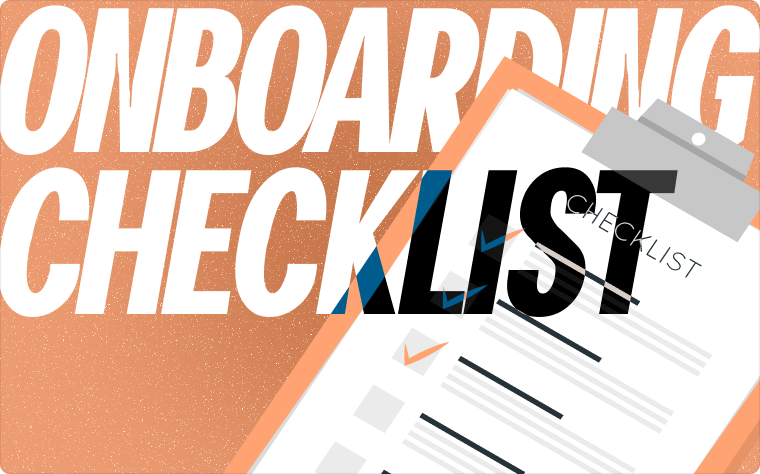How to Create an Onboarding Checklistfor New Employees

An onboarding checklist is a comprehensive guide for new employees that outlines all the necessary steps and tasks to be completed during their initial days, weeks, and months at a company. It serves as a roadmap for both the employee and the employer to ensure a smooth and successful integration into the organization.
According to Forbes, a well-structured onboarding process can improve employee retention, increase job satisfaction, and boost overall productivity. It is an essential tool for companies of all sizes to effectively onboard new employees and set them up for success.
An onboarding checklist should include a combination of pre-boarding, first day, first week, and first month tasks. These can vary depending on the company and position, but some common items to include are:
To create an effective onboarding checklist, follow these steps:
Some tips for a successful onboarding process include:
What Is an Onboarding Checklist?
An onboarding checklist is a helpful resource utilized by companies to guarantee that new employees are effectively introduced to their responsibilities, the company’s values, and essential protocols. It clearly outlines the tasks and actions that must be accomplished by both the employee and HR department to facilitate a seamless transition into the organization.
Get more out of your business
Get the best employee engagement content every week via mailing list
Why Is an Onboarding Checklist Important?
An onboarding checklist is essential for guaranteeing a seamless and organized integration of new employees into the organization. It aids in familiarizing them with company culture, policies, and job responsibilities. This streamlined process reduces confusion and improves employee retention rates. Moreover, the onboarding checklist sets clear expectations, encourages engagement, and enhances productivity from the very beginning.
When creating an onboarding checklist, it is crucial to take into account the specific needs of new employees, align it with company objectives, and incorporate feedback from current employees for ongoing improvement.

What Should Be Included in an Onboarding Checklist?
As a human resources professional or a business owner, creating an effective onboarding process for new employees is crucial for their success and satisfaction within the company. A key component of this process is a comprehensive onboarding checklist. This section will discuss the essential tasks that should be included in an onboarding checklist, such as pre-boarding tasks, first day tasks, first week tasks, and first month tasks. By following this guide, you can ensure that your new employees have a smooth transition and a positive experience as they join your team.
1. Pre-boarding Tasks
2. First Day Tasks
On a new employee’s first day at a tech startup, the team welcomed her with a personalized desk set-up and a team lunch. She was introduced to everyone and was given a buddy who helped her settle in and understand the company culture.
3. First Week Tasks
Did you know that effective onboarding can improve employee retention by 82%?
4. First Month Tasks
Did you know that a well-structured onboarding process can lead to 50% greater new hire retention?

How to Create an Effective Onboarding Checklist?
As a human resources professional, it is crucial to have a well-designed onboarding process for new employees to ensure a smooth transition into the company. One essential component of this process is an onboarding checklist that outlines the key tasks and goals for the new employee. In this section, we will discuss the steps to create an effective onboarding checklist, including identifying key tasks and goals, determining a timeline and assigning responsibilities, providing necessary resources and materials, and incorporating feedback and adjustments. These tips will help you streamline the onboarding process and set your new employees up for success.
1. Identify Key Tasks and Goals
2. Determine Timeline and Assign Responsibilities
When determining the timeline and assigning responsibilities for the onboarding process, it’s crucial to maintain transparency and open communication. Establish clear expectations and provide necessary support for successful task completion. Regularly review the timeline and responsibilities to make any adjustments based on feedback and changing circumstances.
3. Provide Necessary Resources and Materials
4. Incorporate Feedback and Adjustments
The incorporation of feedback and adjustments has been a pivotal aspect of successful onboarding processes, leading to improved employee satisfaction and retention rates in various organizations.

What Are Some Tips for a Successful Onboarding Process?
As a company, it is crucial to have a well-structured onboarding process for new employees. This sets the tone for their entire experience with the company and can greatly impact their success and satisfaction in their role. In this section, we will discuss some key tips for creating a successful onboarding process. From clear and frequent communication to ongoing support and evaluation, each aspect plays a critical role in ensuring a smooth transition for new employees. Let’s dive in and discover how to make your onboarding process a success.
1. Communicate Clearly and Frequently
2. Encourage Team Building and Integration
At my previous workplace, we organized a monthly team-building activity where employees from different departments worked together on a project. This not only strengthened our bonds but also improved interdepartmental coordination and fostered a sense of integration within the team.
For more insights on creating an onboarding checklist for new employees, check out this article.
3. Provide Ongoing Support and Training
4. Evaluate and Review the Onboarding Process
For a successful onboarding process, ensure regular follow-ups with new employees, promote open communication, and continuously refine the checklist based on insights gathered. Additionally, it is important to regularly evaluate and review the onboarding process to ensure its effectiveness.
Frequently Asked Questions
What are the critical stages of the onboarding process?
The critical stages of the onboarding process include before the first day, the first day, and the first year. Before the first day, steps such as building employee comfort and connection, completing paperwork, and sending a welcome note are important. On the first day, the employee should be introduced to their team, given a tour of the workplace neighborhood, and provided with their new hire packet. During the first year, it’s crucial to monitor their progress and provide necessary resources for them to succeed.
How does a structured onboarding program benefit the organization?
A structured onboarding program has many positive impacts on the organization, such as improved new-hire retention and productivity. This is because a structured program allows for guided instructions, monitoring by HR practitioners, and completion of tasks by hiring managers while tracking new hires’ progress. This digital process helps to prevent any lapses and stoke frustrations that may jeopardize retention and engagement.
What should be included in a new hire checklist?
A new hire checklist should include important milestones, such as completing employee paperwork, setting up their record, and introducing them to their team. It should also cover any specific criteria, such as dress code and office location. Other important items to include are handbook acknowledgement forms, state tax withholding forms, and security agreements. Additionally, consider adding in any necessary consent agreements, such as drug or alcohol tests, non-compete or nondisclosure agreements, and each deposit forms for banking details.
What role does the human touch play in the onboarding process?
The human touch plays a pivotal role in the onboarding process, as it focuses on the human needs that drive loyalty, retention, and productivity. This includes building employee comfort and connection, assigning an employee buddy, and sending a personalized welcome note from the manager. This helps to sustain candidate confidence and make new employees feel welcomed and prepared for their new role.
How can I ensure a successful onboarding process?
To ensure a successful onboarding process, it’s important to focus on the employee’s needs and company culture, rather than just completing tasks and signing documents. Utilize a new hire checklist to guide the process, but also make sure to communicate expectations, provide necessary resources, and address any concerns. Additionally, monitor the progress of the new hire and correct any lapses to maintain a positive first impression and sustain their loyalty to the company.


